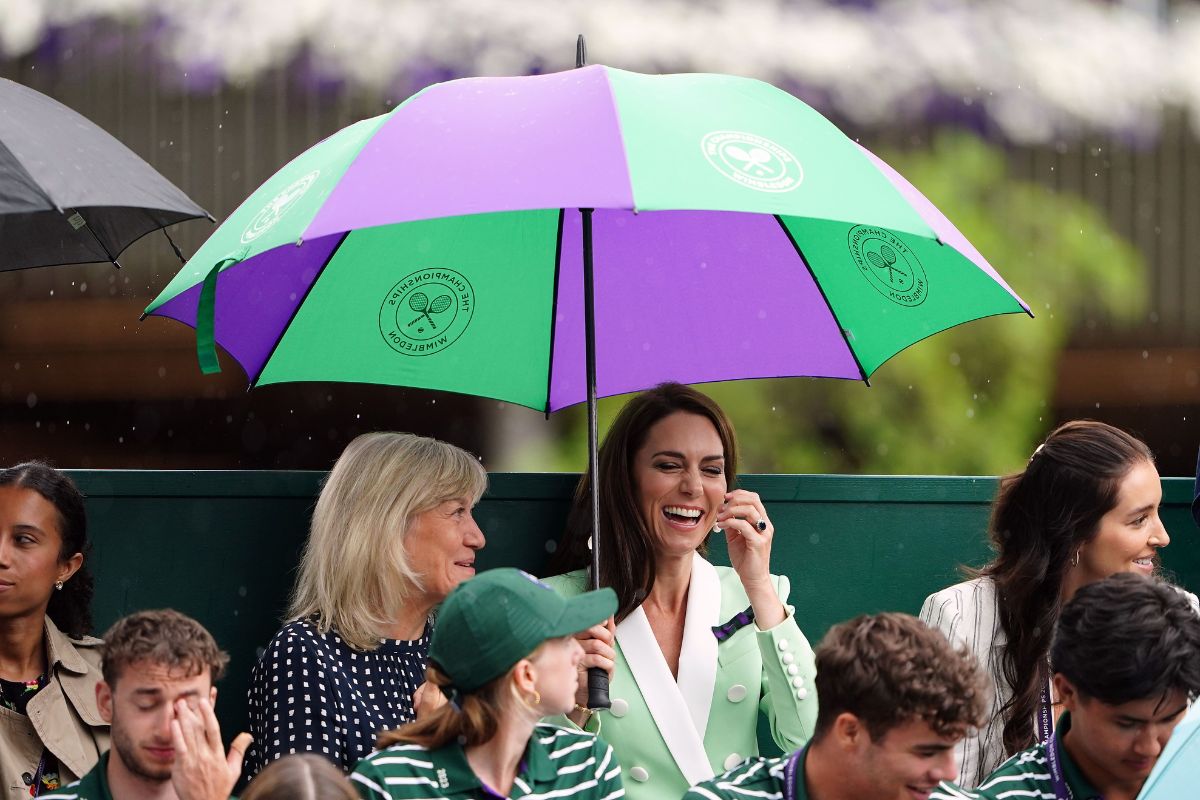
Wimbledon, the oldest tennis tournament in the world, has seen its fair share of weather drama. Ever wondered how often rain interrupts play? Wimbledon weather history is filled with fascinating facts that reveal how unpredictable British weather can be. From scorching heatwaves to sudden downpours, the tournament has experienced it all. Did you know that in 1976, temperatures soared to a blistering 96°F (35.6°C)? Or that in 1922, rain delayed the finals for three days? The weather has even led to the introduction of retractable roofs on Centre Court and No. 1 Court. Understanding Wimbledon’s weather history not only adds to the charm of the tournament but also highlights the resilience of players and fans alike. Buckle up for a journey through 25 intriguing weather-related facts about this iconic event!
Wimbledon Weather: A Rollercoaster Ride
Wimbledon, the oldest tennis tournament in the world, is known for its unpredictable weather. From scorching heat to sudden downpours, the weather at Wimbledon has a history as colorful as the tournament itself. Here are some fascinating facts about Wimbledon weather history.
-
The first Wimbledon tournament in 1877 experienced typical British weather with light rain showers.
-
In 1922, the tournament moved to its current location at Church Road, where the weather continued to play a significant role in matches.
-
The wettest Wimbledon on record occurred in 1927, with 4.5 inches of rain falling during the tournament.
-
The hottest day recorded at Wimbledon was on July 1, 2015, when temperatures soared to 96.3°F (35.7°C).
-
In 1976, Wimbledon experienced a heatwave with temperatures consistently above 86°F (30°C) for most of the tournament.
Rain Delays and Roofs
Rain delays have been a part of Wimbledon since its inception. The All England Club has taken several measures to combat these interruptions.
-
The first rain delay in Wimbledon history occurred in 1877, during the inaugural tournament.
-
In 1991, the tournament experienced 118 rain delays, making it one of the most interrupted Wimbledons ever.
-
The Centre Court roof was introduced in 2009 to minimize rain delays, allowing matches to continue despite the weather.
-
The first match played under the new roof was between Dinara Safina and Amélie Mauresmo on June 29, 2009.
-
The No. 1 Court also received a retractable roof, which was completed in 2019, further reducing rain delays.
Memorable Weather Moments
Certain weather events have left a lasting impact on Wimbledon, creating memorable moments for players and fans alike.
-
In 1996, a hailstorm hit Wimbledon, causing a 20-minute delay during the match between Pete Sampras and Richard Krajicek.
-
The 1985 tournament saw a rare occurrence of fog, which briefly halted play on the outer courts.
-
During the 2004 tournament, a tornado warning was issued for the Wimbledon area, though no tornadoes actually touched down.
-
In 2012, heavy rain caused a delay in the men's final between Roger Federer and Andy Murray, leading to the use of the Centre Court roof.
-
The 2016 tournament experienced a record number of rain delays, with 28 matches postponed on the first Monday alone.
Weather and Player Performance
Weather conditions can significantly impact player performance, influencing everything from ball speed to player endurance.
-
The 1977 tournament saw temperatures so high that several players suffered from heat exhaustion, leading to changes in scheduling to avoid the hottest parts of the day.
-
In 1993, the tournament experienced unusually cold weather, with temperatures dropping to 50°F (10°C), affecting player performance and match outcomes.
-
The 2010 tournament had a mix of rain and sunshine, leading to slippery grass courts that caused several players to slip and fall.
-
In 2018, the tournament experienced a heatwave with temperatures reaching 91°F (33°C), leading to the introduction of a 10-minute heat break for players.
-
The 2021 tournament saw a mix of rain and sunshine, with several matches delayed due to wet courts and slippery conditions.
Technological Advances in Weather Management
Over the years, Wimbledon has adopted various technologies to better manage weather conditions and ensure smooth gameplay.
-
In 1997, Wimbledon introduced the use of tarpaulins to cover the courts during rain, reducing delays and protecting the grass.
-
The tournament employs a team of meteorologists to provide accurate weather forecasts and help schedule matches accordingly.
-
In 2015, Wimbledon introduced a new grass variety that is more resilient to weather changes, ensuring better playing conditions.
-
The use of advanced drainage systems helps quickly remove water from the courts, minimizing delays after rain showers.
-
Wimbledon also uses high-tech sensors to monitor court conditions, ensuring player safety and optimal playing surfaces.
Wimbledon Weather: A Storied Past
Wimbledon’s weather history is as unpredictable as the matches themselves. From scorching heatwaves to unexpected downpours, the tournament has seen it all. These weather quirks have shaped the event, adding layers of excitement and challenge for players and fans alike. Rain delays have become almost as iconic as the strawberries and cream, while the introduction of retractable roofs has modernized the experience.
Understanding Wimbledon’s weather history gives us a deeper appreciation for the resilience and adaptability of the tournament. It’s not just about tennis; it’s about overcoming nature’s whims. Whether you’re a die-hard fan or a casual viewer, knowing these facts adds a new dimension to watching the games. So next time you tune in, remember the weather’s role in making Wimbledon the legendary event it is today.
Was this page helpful?
Our commitment to delivering trustworthy and engaging content is at the heart of what we do. Each fact on our site is contributed by real users like you, bringing a wealth of diverse insights and information. To ensure the highest standards of accuracy and reliability, our dedicated editors meticulously review each submission. This process guarantees that the facts we share are not only fascinating but also credible. Trust in our commitment to quality and authenticity as you explore and learn with us.
